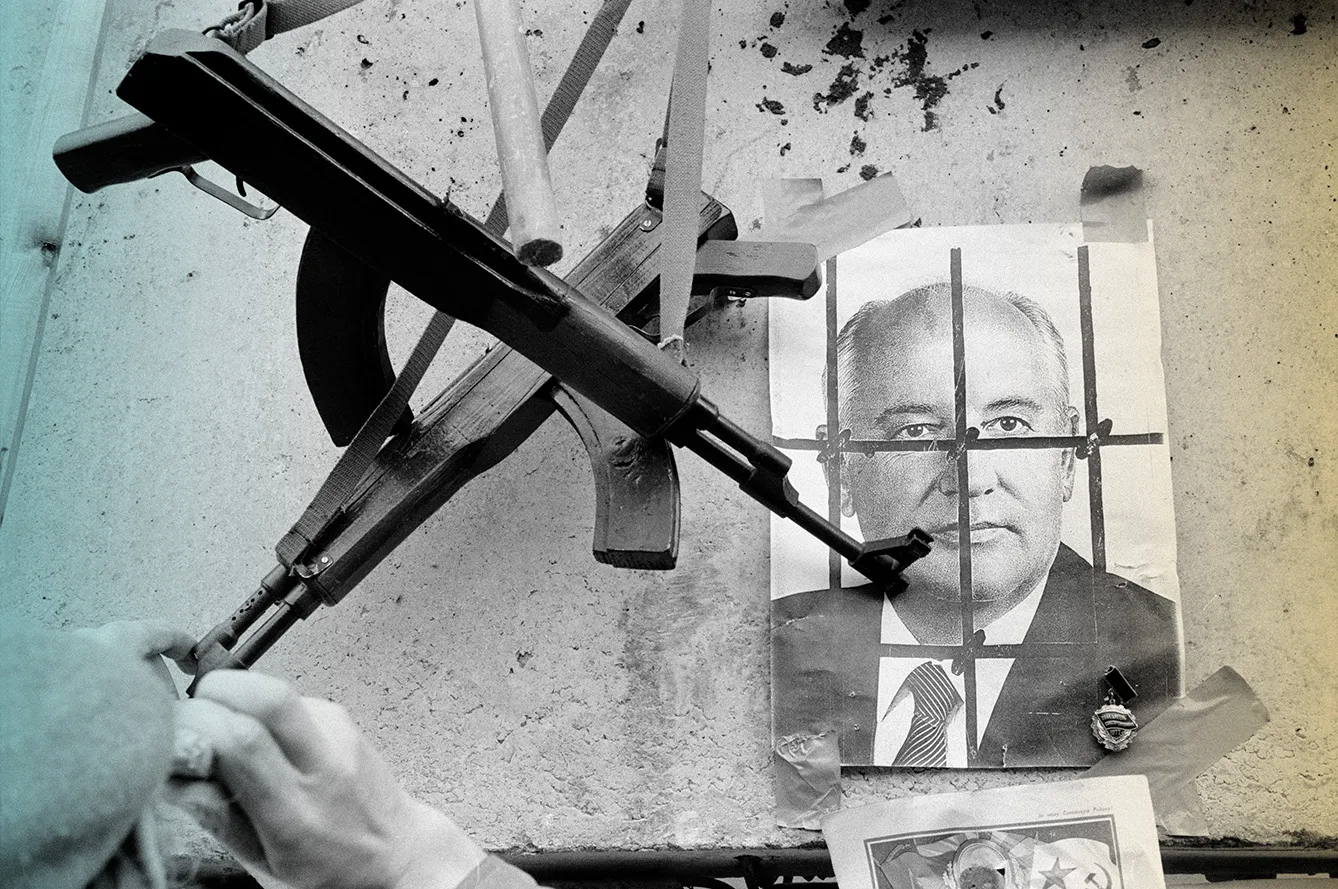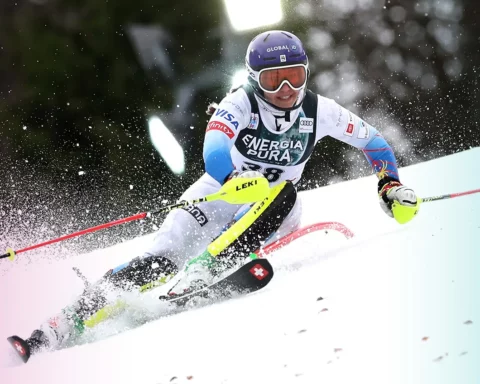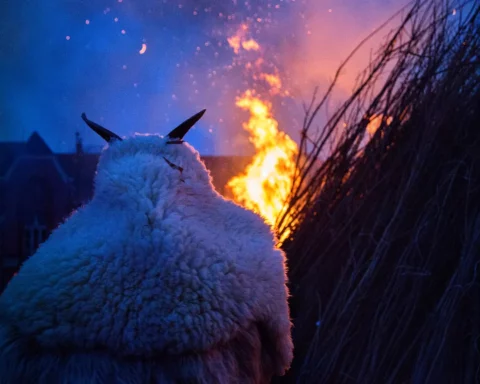It took a confluence of events to lead to Lithuania’s restored statehood. For one, there were peaceful protests like the March of Rock, which spread independence ideas among the youth, as well as the Baltic Way, when all three Baltic states joined hands in a human chain to show the unity and resolution of the people. This was aided by the fortunate political situation – the Soviet Union was unstable, dependent on Western trade, and its centralized economy was barely functioning. In such an environment, the leader of the Soviet Union, Mikhail Gorbachev, started major reforms to restructure the USSR – allowing freedom of the press and speech, and decentralizing the economy.
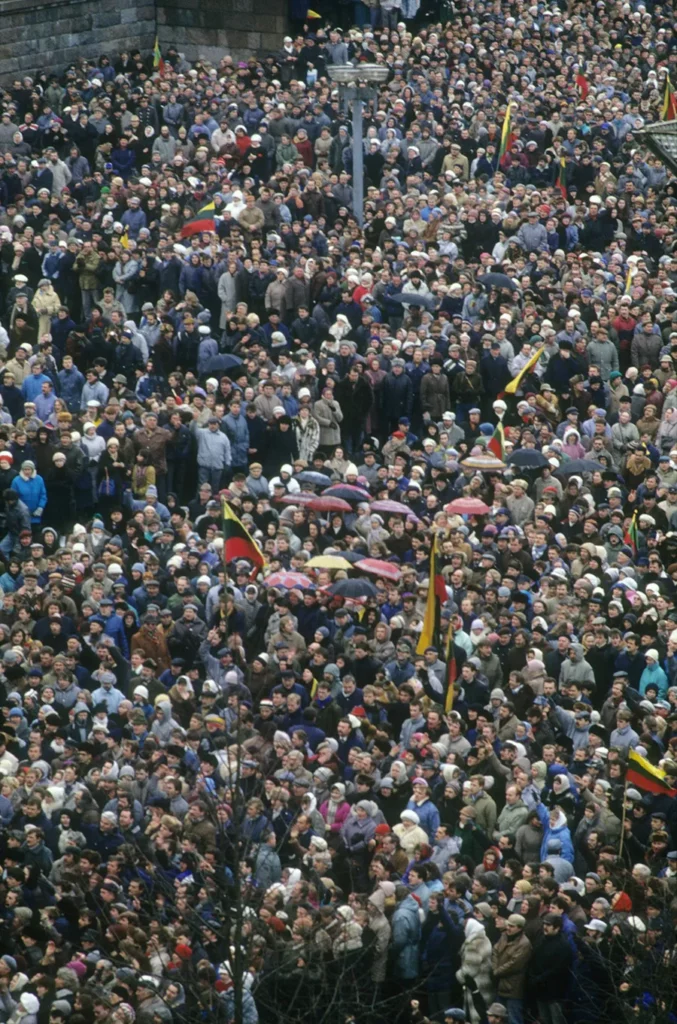
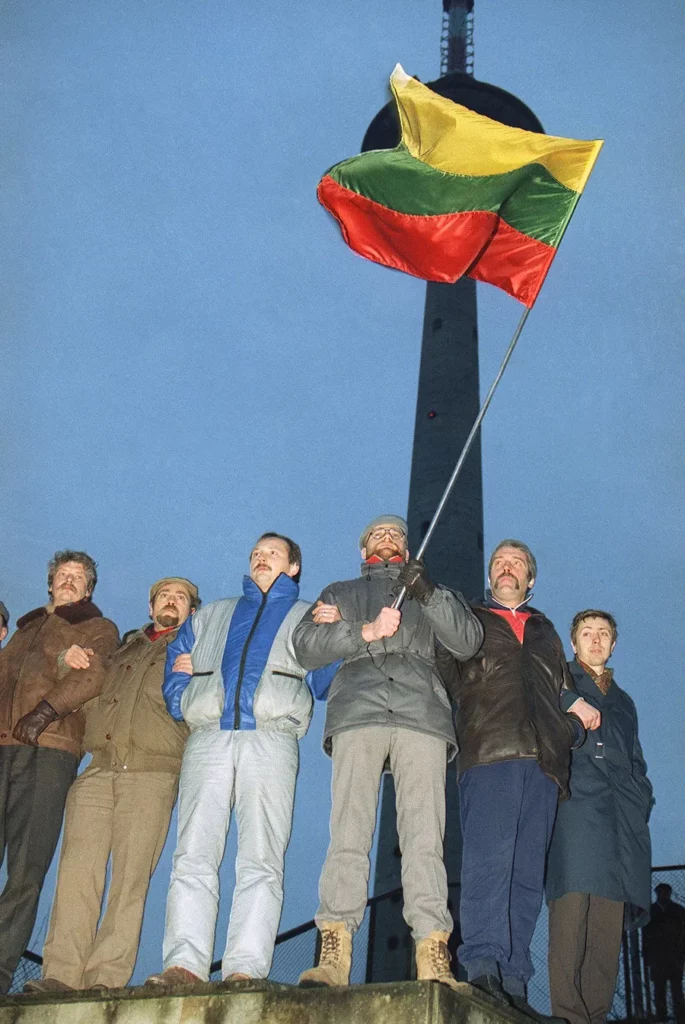
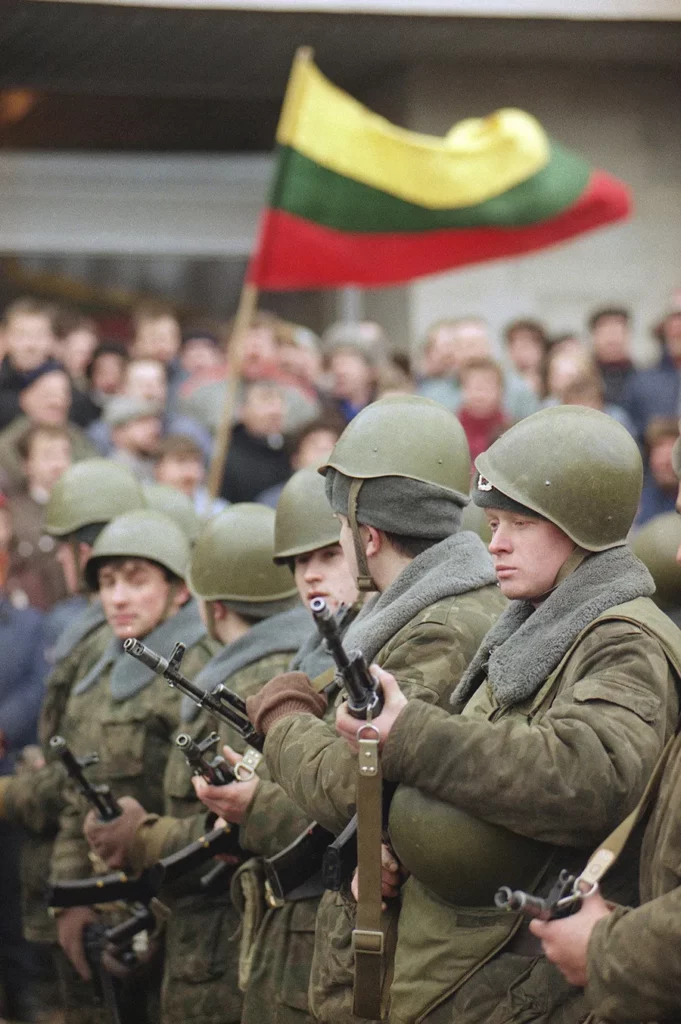

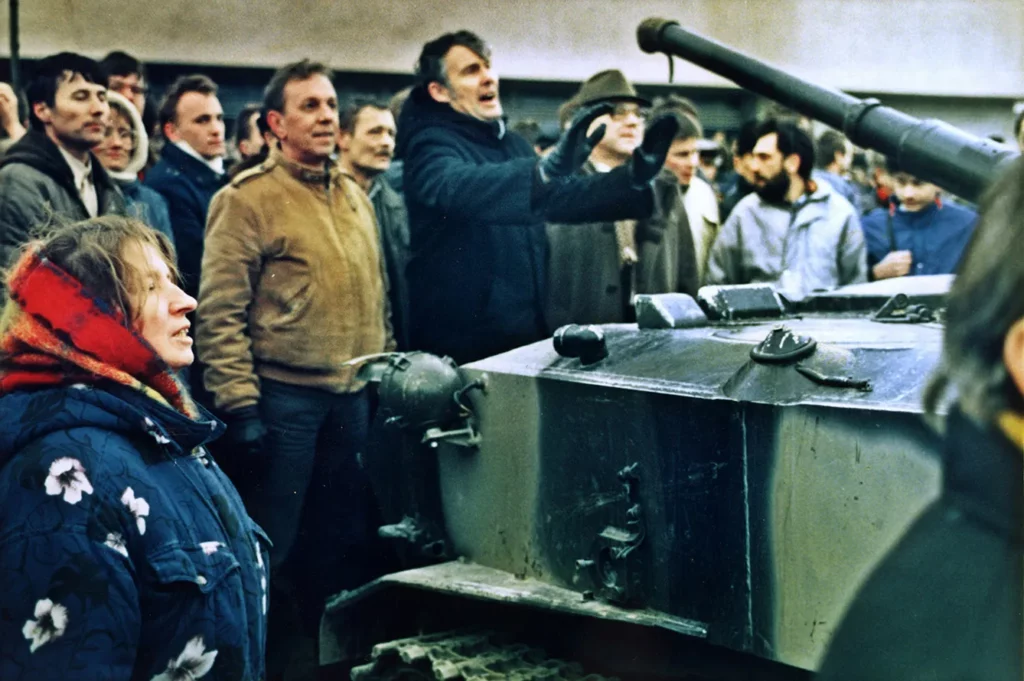
As a result of this complicated situation, Lithuania declared independence and did not experience any active Soviet aggression for almost a year. However, after ten months of an oil and gas blockade, the government was presented with an ultimatum, with the Soviets giving Lithuania a 24-hour deadline to restore the Soviet constitution. That same night, the movement of Soviet military units was noticed on the street of Vilnius. The next morning, Soviet troops seized the National Defense Department and began to take over the country’s government and military buildings.
The Siege Tower
On 12 January 1991, military maneuvers intensified – 50 Soviet tanks were reported leaving an army base neighboring the capital and heading to the city center. At the same time, crowds began to gather around the city’s most significant buildings – the Supreme Council, TV Tower, and National Television and Radio. By noon, a crowd of 20,000 people had already surrounded the Council. By midnight, a few army columns started moving toward the TV tower, fully encircling it. Then at 2 am, troops began to fire overhead and into a civilian crowd.
Shortly afterward, tanks drove straight through the lines of people, killing 14 and injuring a few hundred. While that was happening, the Soviet military was taking over the National Television and Radio building. Thus, the Supreme Council became one of the last significant institutions still controlled by the government. Following the bloody events, 50,000 more people showed up in the morning to defend the Council. Barricades were erected all around the square, and the crowd grew larger.
However, the decisive moment – perhaps the most decisive event in recent Lithuanian history – happened that morning on 13 January 1991. At 10:35 am, ignoring orders from Moscow to overtake the Supreme Council building, seven tanks and thirty armored vehicles drove straight past the building and the massive crowds. The soldiers’ refusal to obey Soviet command remains one of the most remarkable moments in contemporary Lithuanian history, and the memory of the ones who stood there. Many say that despite the danger, it was an incomparable atmosphere of experienced unity and determination.
Because of all these events, the unarmed crowds around the TV tower and parliament became the most iconic moments in contemporary Lithuanian culture. It is also a great source of inspiration, especially given the divisions and fragmentation very often mark today‘s political landscape. But most importantly, the memory of the January events reminds us that we can stand and act together in the decisive moments of history.


